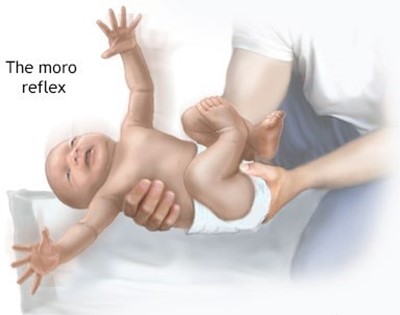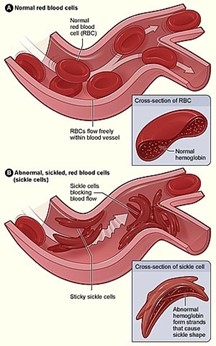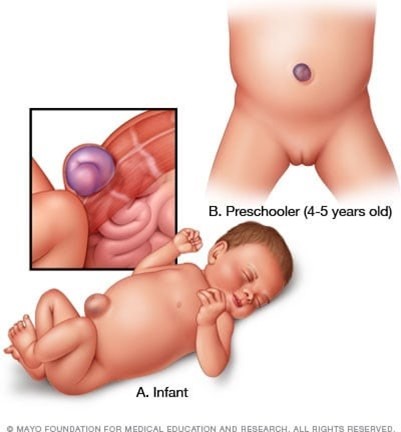The nurse is assessing a 6-month-old infant. Which response requires further evaluation by the nurse?
Has doubled birth weight.
Plays "peek-a-boo."
Demonstrates startle reflex.
Turns head to locate sound.
The Correct Answer is C
The startle reflex, also known as the Moro reflex, is a normal reflex in infants that is present at birth and usually disappears by 3-4 months of age. The reflex is elicited by a sudden loud noise or change in position, and the infant will extend their arms and legs, then bring them back in towards their body.
If a 6-month-old infant is still demonstrating the startle reflex, it may indicate a developmental delay or neurological issue and requires further evaluation by the nurse or healthcare provider.
The other responses are all normal developmental milestones for a 6-month-old infant. By 6 months of age, most infants will have doubled their birth weight, enjoy playing games like peek-a-boo, and have developed the ability to turn their head to locate sounds.

Nursing Test Bank
Naxlex Comprehensive Predictor Exams
Related Questions
Correct Answer is C
Explanation
The nurse should report chest pain to the healthcare provider immediately when caring for a child with sickle cell disease who is experiencing a sickle cell crisis. Chest pain can be a sign of acute chest syndrome, a potentially life-threatening complication of sickle cell disease that requires prompt treatment.
Swelling in the hands or feet, ulcers on the legs, and jaundice are common symptoms of sickle cell disease and do not require immediate reporting to the healthcare provider.

Correct Answer is B
Explanation
Information about the child's reactions to any previous hospitalizations would be particularly helpful in planning care for this six-year-old girl who is being admited for repair of an umbilical hernia. This information can help the nurse anticipate and address any fears or concerns the child may have about the hospitalization and procedure.
A list of achievement timeline for developmental milestones is not particularly relevant in this situation.
A history of rubella, rubeola, or chicken pox is not particularly relevant in this situation.
Information about the mother's use of alcohol, drugs, or cigaretes during pregnancy is not particularly relevant in this situation.

Whether you are a student looking to ace your exams or a practicing nurse seeking to enhance your expertise , our nursing education contents will empower you with the confidence and competence to make a difference in the lives of patients and become a respected leader in the healthcare field.
Visit Naxlex, invest in your future and unlock endless possibilities with our unparalleled nursing education contents today
Report Wrong Answer on the Current Question
Do you disagree with the answer? If yes, what is your expected answer? Explain.
Kindly be descriptive with the issue you are facing.
